Fact: You don’t have to be a “math person” to ace the ACT Math section. You might have taken your first look at the ACT Math test and thought, Easy enough for Stephen Hawking, sure, but what about me?
Unlike Stephen, you don’t have to have a movie made about how brilliant you are to get a great score, or even a perfect score, on ACT Math. Instead, you can actually pick up (almost) everything you need to know by taking a few pointers from a different movie altogether…
Jurassic Park.
That’s right. Because—and I realize this isn’t common knowledge—the same principles that will lead you to a great score on ACT Math are actually the exact same principles that will help you survive a dinosaur sanctuary gone horribly, horribly wrong.
Table of Contents
- Move Fast: The Least You Should Know About ACT Math
- No, Really, MOVE FAST: ACT Math Test Timing
- Success Is All in the Details: ACT Math Scores
- Get Familiar With the Terrain: ACT vs SAT Math
- Know What You’re Getting Into: Skills Tested in ACT Math
- Preparation Is Worth It: ACT Math Question Types
- Expect Some Chaos: Struggles on the ACT Math Test
- Learn From Your Mistakes: A Guide to Raising Your Score 2, 4, or 6 Points
- Don’t Let the Electricity Go Out: How to Get a Perfect 36 on the ACT Math Test
- Ready for the Sequel(s): Where Can I Find More Examples and Resources?
I know you’re dying to learn these skills. So if your ACT exam (or a trip to the world’s worst-planned theme park) is in the near future, here’s what you’re going to need to know:
Read on, explorers!
And, you know…

How to Use This Post
Before we get into our Jeeps, here’s a quick summary of what you can expect from this post. First, we’ll look at an overview of the ACT Math section, before going into its scoring and the limited (yes, limited!) skills it tests. For those of you still on the fence about which exam to take, we’ll compare ACT Math to SAT Math. From there, we’ll go on to look at the question types you’ll encounter, as well as some sample problems. Then, we’ll take a look at step-by-step instructions for raising your ACT Math score 2, 4, or even 6 points.
If ACT Math is new to you, you’ll want to begin with the overview of ACT Math. After you’ve gone through the quiz here, you should try your first full-length ACT practice test, then come back to this post for advice about how to overcome common struggles on this section of the ACT test and tips for raising your score.
On the other hand, if you’re already somewhat (or very) familiar with ACT Math, you may want to start with the guide to improving your score, or jump into some of our practice problems.
![]()
Move Fast: The Least You Should Know About ACT Math

You know what would have been a good idea before getting into those Jeeps? Looking at a map. It’s a good idea to look the high (and low) points before you get started…
So what is ACT Math? It’s the second section, or “test,” as the ACT refers to them, you’ll see on test day. Unlike the ACT Essay, it is not optional (sorry). You’ll answer 60 multiple-choice questions in 60 minutes. And yes, you do get to use a calculator, as long as it’s an approved one. On the other hand, you will not get a list of ACT Math formulas at the beginning of the section, as you would on the SAT.
(Here’s a printable guide to math formulas on the ACT you can use to start studying now!)
![]()
No, Really, MOVE FAST: ACT Math Time
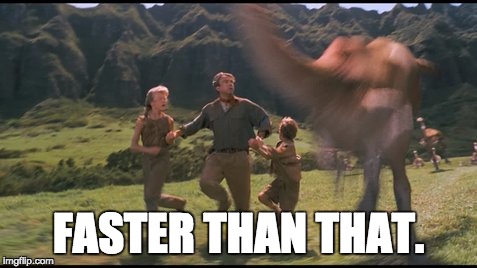
Yep, you better move fast: that’s 60 questions in 60 minutes. And no, that’s not a typo.
Now, you really don’t have to be a math person to see that that’s a minute per question. Exactly. No more, no less.
So does that mean that you should be practicing (or building up to practicing) one math problem a minute?
Not necessarily. Keep in mind that the ACT Math section format goes, very roughly, from simpler to more complex topics. This means that you’ll probably want to save some time on the easier problems so that you can spend more than a minute on the harder problems.
It’s a balancing act, because keep in mind that if you don’t answer the easy questions right because you’re going too fast, you’re missing out on some of the less stressful problems. In other words, make sure you’re getting that low-hanging fruit!
As you can see, timing on the ACT Math section has a big effect on scoring, so let’s take a look at that before we go any further…
![]()
Success Is All in the Details: ACT Math Scores

You’d think that being academics, at least some of our film’s heroes would have been like, “Whoa, whoa, whoa. Hold on a minute, guys. Let’s get a little more detail about how these beasts are corralled before we go driving through their homes.” But they didn’t–and it cost them. One little malfunction after another, and all of a sudden you’re being chased by raptors.
In other words, the little things add up.
So let’s see how the ACT Math section adds up. Like other sections on the ACT, Math is scored on a scale from 1 to 36, with 36 being the best possible score. This score is then averaged with your scores from the other multiple-choice sections of the ACT (English, Reading, and Science) for your composite, or overall, score.
Unlike the ACT Essay, which will be graded by two real, live humans, ACT Math is Scantron city, pure and simple. This means that you definitely want to use a Number 2 pencil (the grading machines really, really don’t care if you prefer mechanical pencils, which they have trouble reading).
It also means that there aren’t any points for almost answering a question right, or even answering it correctly most of the way through.
The Scantron, just like the dinosaur, is cold, cold-blooded.
ACT Math Percentiles
“What’s a good score on the ACT Math test?” First of all, take a look at “ACT Scores” for all the information you could ever want on what a good composite ACT score is. Then get back here, because we’re about to answer your first question!
Percentiles describe how many students scored lower than you. More specifically, they tell us how many students out of every 100 scored lower than you. If you’re in the 98th percentile, for example, you scored better than 98 out of every 100 students on the test.
Most students look at their composite percentile and leave it there. However, if you’re aiming for a perfect 36 on ACT Math, know that it’s possible—but difficult! Take a look at the table below.
ACT Math Percentiles
| Score | Percentile |
|---|---|
| 36 | 100 |
| 35 | 99 |
| 34 | 99 |
| 33 | 98 |
| 32 | 97 |
| 31 | 96 |
| 30 | 95 |
| 29 | 93 |
| 28 | 91 |
| 27 | 88 |
| 26 | 83 |
| 25 | 78 |
| 24 | 74 |
| 23 | 68 |
| 22 | 63 |
| 21 | 59 |
| 20 | 55 |
| 19 | 51 |
| 18 | 45 |
| 17 | 38 |
| 16 | 29 |
| 15 | 17 |
| 14 | 8 |
| 13 | 3 |
| 12 or below | 1 |
What can we take away from this table? A whole lot! First of all, let’s take a look at the top score: 36.
You might have noticed that students scoring a 36 on the ACT Math test are scoring in the 100th percentile. You might also have noticed that it makes no sense to have a 100th percentile. How can you score better than 100 out of every 100 students, when you have to be that last person?
Here’s what it comes down to: students scoring a perfect 36 on ACT Math are so rare that the test-maker rounds up to 100%. This could mean that 5 out of every 1000 students score a 36 (scoring better than 995 students out of 1000 = 99.5%, rounding up to 100). However, it could also mean that 1 out of every 1,000,000 students scores a 36 (scoring better than 999,999 students out of 1,000,000 = 99.9999%).
How many students actually get a perfect 36 on ACT Math? I’d be willing to bet that it’s way more than one in a million (about two million students take the ACT annually), but probably fewer than 5 out of every 1000 students. Take a look at the percentiles for students scoring 35 and 34 on the Math test: these students are in the 99th percentile, meaning that not a whole lot of people get astronomical scores.
Average ACT Math Scores
On the other hand, look at the bottom of the table: ACT Math is the only section on the ACT where you can score a 12 and still be in the 1st percentile.
In short? This tells us that students generally find ACT Math pretty tough. In fact, a lot of students find it the hardest section on the ACT even though, statistically, students score slightly worse on ACT English.
We also know that most students score above a 12, and that the average Math score is 20.7 (don’t worry, I didn’t get that last statistic from the table—it’s actually impossible to figure out the precise score from that data! You can see more info here).
This means that if you’re scoring above 21 on the ACT Math test, you’re scoring above average. And by the time you hit the 30s? You’re probably scoring better than anyone in your testing room.
The bottom line? ACT Math is hard, but it is also learnable. Getting a perfect score is difficult (but not impossible!). And getting a great score is within your reach.
Get Familiar With the Terrain: ACT vs SAT Math
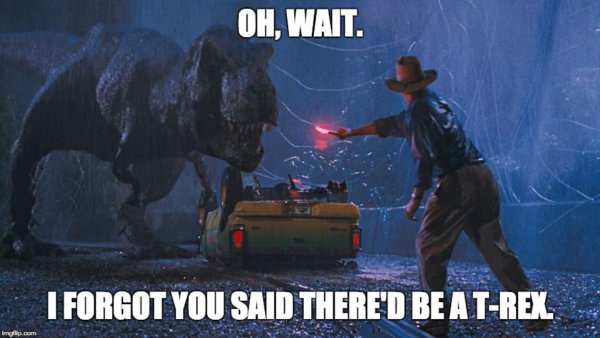
By this point, you may be thinking…sounds pretty tough. Maybe I should take the SAT instead.
Maybe! You should know what you’re getting into before you start the ride, after all.
What test should you take? It all depends on your particular strengths and weaknesses. So let’s do a quick rundown of how ACT and SAT Math are similar and different.
You’ll actually spend longer doing math sections on the SAT, 80 minutes instead of 60. However, you have more time per question on the SAT—there are 58 questions, while the ACT, as we’ve seen, has 60.
You may have heard that SAT Math is easier than ACT Math. While this used to be true in terms of the actual grade-level of material tested (ACT tests some advanced algebra and very basic trig, as we’ll see), SAT Math has now kicked it up a notch. Now, you can expect to find Algebra II and basic trig topics on both tests.
The ACT lets you use a calculator on all Math questions. The SAT now has a 25-minute, 20-question, no-calculator bonus round. Okay, it’s not so much of a bonus round as a required section, but that does make it sound more exciting. Anyway, if you’re great at mental math, the SAT may be the way to go.
Finally, ACT Math is pure multiple-choice, meaning that you won’t have to “grid in” answers, or enter your own answer choices. This is great if you love or are very good at using multiple-choice techniques like backsolving, where you use the answer choices to help you get the right answer. These techniques, by the way, can be learned and perfected!
And even if you have absolutely no clue how to approach a Math problem on the ACT, you still have a 20% chance of getting it correct by blindly guessing (though by the time we’re done with this post, we hope you won’t have to!) On the other hand, 20% of SAT Math problems are grid-ins.
If you’re still not sure which test to take, here’s ACT expert Kristin with an in-depth take on SAT versus ACT Math.
Know What You’re Getting Into: Skills Tested in ACT Math
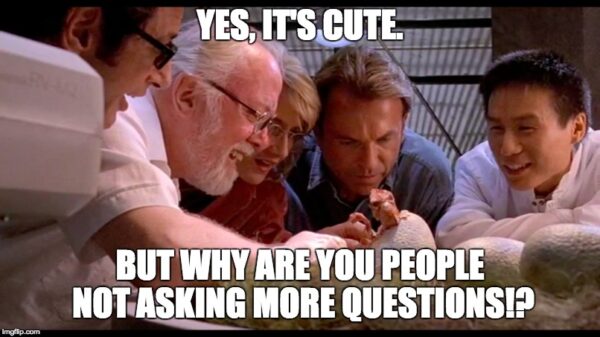
Decided to stick with the ACT? Awesome. Not so thrilled about this choice? Totally fine. Let’s change your mind. (But don’t try to stop the ride early, because really, there might be some important safety procedures that will keep you from getting torn apart by a T-Rex later on.)
First of all, I don’t blame you a bit. If you’re struggling to get your ACT Math score up, you may be pulling out your hair, wondering, what does this test even want from me?!
This is, sadly, an all-too-common reaction, because I can tell you exactly what the ACT Math test wants from you. It wants you to show off your mastery of fifty-two math topics in six different areas, ranging from Pre-Algebra to Trig.
See, a lot of students just focus on that “ranging from Pre-Algebra to Trig” part. And that sounds pretty scary. But I want to drag your attention back to the first part of the sentence: fifty-two math topics! Not an infinite number of topics, not even a hundred different topics: fifty-two.
You can learn fifty-two topics.
Yes, ACT Math will combine these topics in interesting ways, and harder problems will almost always bring in knowledge from more than one area. However, in terms of studying, it’s really good to know that you don’t need to—and you really shouldn’t—be studying your notes from the past three years of math class.
What you need to study are the skills that ACT Math rewards.
What Are the Goals of the ACT Math Test?
Unlike ACT Science, which only touches briefly on actual content to focus more on reasoning, ACT Math tests both what you’ve learned about the aforementioned 52 topics and how you use the information you have in mathematical reasoning.
If the test were more about reasoning, it would provide you with formulas, which it doesn’t, though the SAT does. If the test were more about what you’ve studied in math class, it might ask you to provide your own answers (which the SAT also does) or even show your work (don’t worry, neither test asks you to do this).
Instead, ACT Math is a fine balance of both content knowledge and reasoning skills. I can’t stress this enough, though: both of those things can be learned.
Why Do Colleges Care?
Colleges care because, at the end of the day, it’s helpful for them to have some indication of both how much you remember from your math classes and how well you’re able to use this information in new problems. They also want to see if you’ll be able to handle the coursework during your freshman year of college.
What’s that? You don’t want to major in math? I’m definitely not going to make you, but bad news if you were hoping to avoid math altogether after high school. The fact is that most colleges have core requirements, meaning you’ll probably have to take at least a little bit of math before you graduate. Colleges don’t want to risk admitting students who will have trouble keeping up with the coursework.
Finally, colleges care about your ACT Math scores because they care about your ACT scores. We can debate it until the cows come home, but the fact is that colleges want some more objective way of comparing students than their GPAs, which can vary drastically according to the courses you’ve taken, how challenging your high school is, how your school weights grades from different classes, and many, many other factors.
What High School Classes Taught You These Skills?
The good news is that you’ve already learned almost everything that ACT Math tests! You might have learned it back in eighth grade or even earlier—but chances are, you have learned it.
This makes our 52 topics from earlier even more attainable! Not only are these 52 topics pretty much all you’ll see on ACT Math, but they’re topics that you’ve already studied.
ACT Trigonometry
Well, for the most part. Let’s not forget about trigonometry, which you may or may not have taken yet. ACT trig freaks a lot of students out, but this is actually pretty needless. Even if you haven’t taken trig yet, there are only a handful of topics from this area that you need to master.
In fact, there are so few trig topics on the ACT Math test that I’m going to go ahead and list the major ones here:
- SOH-CAH-TOA
- Solving problems with right triangles
- The unit circle
- Basic (very basic) trig formulas: tan
 = sin
= sin /cos
/cos  and sin2
and sin2  + cos2
+ cos2 = 1
= 1 - what the graphs of sine, cosine, and tangent look like
That’s it. What’s more: this is learnable stuff, people!
You can breathe in now.
How to Study for ACT Math Without Studying
More good news: you’re already studying for ACT Math, even if you haven’t started studying for ACT Math yet. I know this for a fact. How?
Because ACT Math rewards real-life skills. It rewards things you do when you’re out shopping, like estimating, quick mental math, and knowing that when you’ve lost your car at the mall, it’s most likely 10 feet (not 10 inches or miles) away. Common sense will take you a long way on ACT Math.
ACT Math also rewards you for the work you’ve done in your math classes at school. And because your math classes likely aren’t the only place you’re using math, ACT Math also rewards the work you’re doing in classes like chemistry and physics.
Pretty cool, right?
Here’s Kristin with an in-depth look at some principles to guide your work on the ACT.
Preparation Is Worth It: ACT Math Question Types
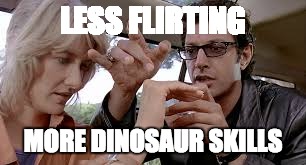
Just like our intrepid explorers could have used some marathon training (and some brushing up on basic common sense) before helicoptering into Jurassic Park, you’ll find that prepping now will pay off later.
Okay, let’s get into the weeds. By this point, you’re probably dying to know what you’ll actually see on the ACT Math test.
Multiple-choice questions. That’s it.
No fill-in-the-blanks, no grid-ins, no proofs. Just multiple-choice questions.
Now, within those multiple-choice questions, there’s some variety. 52 varieties, as I may have mentioned already. Without further ado, here are the areas and topics you can expect to see on the ACT Math test:
- Pre-Algebra: decimals, fractions, integers, positive and negative numbers, square roots, scientific notation, factors, ratios, proportions, percents, charts and graphs of statistics;
- Elementary Algebra: exponents, evaluating algebraic expressions through substitution, using variables to express relationships, algebraic operations, and factoring quadratic equations;
- Intermediate Algebra: quadratic formula, rational and radical expressions, absolute value equations and inequalities, sequences and series, systems of equations, quadratic inequalities, functions, matrices, roots of polynomials, probability, and complex numbers;
- Coordinate Geometry: evaluating points and lines on a graph, polynomials, circles and other curves, graphing inequalities, slope, parallel and perpendicular lines, distance, midpoints, and conics;
- Plane Geometry: angles and relationships among perpendicular and parallel lines, properties of circles, ellipses, rectangles, triangles, parallelograms, trapezoids, transformations, area, volume, three-dimensional geometry;
- Trigonometry (on a very basic level): trigonometric relations in right angles, values and properties of trig functions, graphing trig functions, using trig identities, solving trig equations.
(By the way, this list comes straight from the Magoosh ACT eBook, which is both 100% awesome and 100% free.)
Did you notice that three of those categories are all about algebra? Here’s a quick guide to everything you need to know about ACT algebra that you can use as a refresher (and a quick guide to pre-algebra, if you want to brush up on that first!)
You may also want to check out some of Magoosh’s ACT video lessons, including:
If you’re wondering what these questions might look like in practice, wonder no more! Here is Magoosh’s very own ACT Math quiz, for you to try your hand at some common problem types.
ACT Math Quiz
What ACT Math Topics Are Tested the Most?
Good question! Particularly if time’s short, this is a good way to prioritize your studying. Here are the top ten topics ACT Math loves to test:
- Number Properties. The properties of odds and evens, integers, fractions, positives, and negatives will all appear in various questions on your ACT test. The more comfortable you are with them, the more quickly you will arrive at the correct answer.
- Lines and Graphs. On the ACT Math Test, you will need to be confident graphing lines, parabolas, and circles. Know the standard equations for each, and how to find the equations if given only the graph. You will also need to know the slope formula, the distance formula, and the midpoint formula.
- Plane Geometry. Triangles are tested a lot on the ACT. You should know the Pythagorean Theorem, Triangle Inequality Theorem, the special right triangles: 45-45-90 and 30-60-90, as well as the properties of isosceles and equilateral triangles. Other plane geometry concepts to review include angles, circles, and polygons.
- Data Analysis. You might be asked about things like tables, charts, and graphs. Other statistical concepts include mean, median, and mode, range, and domain. Make sure you can find the union and intersection of sets, and can add and subtract simple matrices.
- Probability. The probability of an event occurring is the desired outcomes/total possible outcomes. The probability of two events occurring together is the product of the two probabilities.
- Ratios and Proportions. A ratio is a relationship between two things. Given a ratio and one “real world” number, you can always set up a proportion to solve for the other missing “real world” number. Sometimes you will need to do this for similar triangles in Geometry, and sometimes in algebraic word problems.
- Functions. A function is a different way of writing an equation. Instead of y = mx + b, we’d have f(x) = mx + b. It’s helpful to think of a function as simply replacing the “y” with a symbol called “f(x).” The ACT may also present made-up symbol functions; pay attention to any definitions you are given, and expand accordingly.
- Trigonometry. Use SOHCAHTOA to help you recall the Trig identities. Remember their inverses: cosecant, secant, and cotangent, and be able to find any of these 6 identities for any angle in a right triangle. Be comfortable converting from radians to degrees and back and understand the unit circle and how it relates to the sign of a trig identity. You might also look at the law of sines if you really want to go the extra mile!
- Inequalities. Remember that when you multiply or divide by a negative number, you must reverse the direction of the inequality. Be comfortable with expressing inequalities on number lines.
- Systems of Equations. You will need to be able to solve for a system of equations. Remember the “n equations with n variables” rule. If you have 2 variables, x and y, then you will need 2 equations with those 2 variables to solve for both. Familiarize yourself with Substitution and Combination.
If you want to focus your studying even more, you can also check out the five most frequently tested ACT Math topics!
Expect Some Chaos: Struggles on the ACT Math Test
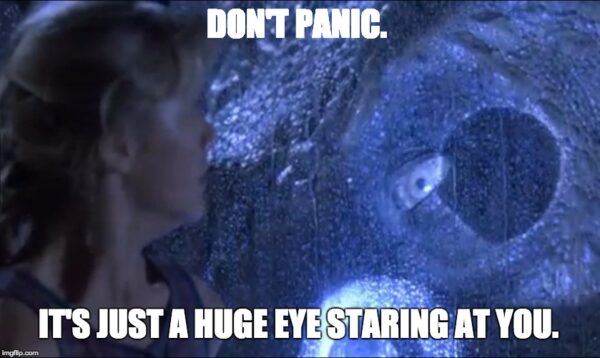
Setting aside the fact that a paleobotanist with an advanced degree doesn’t understand what chaos is, realize that just like Ellie, you’re going to have to accept that chaos exists. You’re also going to have to accept that it exists in Jurassic Park…I mean, on the ACT.
By this point, you may be wondering why, if it’s so learnable, so few students get a perfect 36 on the ACT Math test.
The answer is simple: there are a few components of ACT Math that students struggle to master, and which end up costing them points. Specifically, I’m talking about remembering content, mental math, working with the test format, and time pressure.
Struggles on the ACT Math Test: Remembering Content
What’s that? You didn’t memorize every word out of your pre-algebra teacher’s mouth three years ago? How dare you!
…And how dare everyone else, because I promise you: none of us actually did.
There are going to be some content areas on the test that you just don’t remember. And that’s cool, even if you’re totally blanking! There’s a lot you can do to address that, some of which we’ve already looked at in this post.
But don’t take my word for it. Here’s Magoosh super-star student Ori, who explains his ACT Achilles heel (ACTchilles heel? Sorry) and how he overcame it:
“There was just a lot of math that I didn’t remember from class or that we hadn’t covered, so that was tricky…To help with the math section, I did practice problems and watched the [Magoosh] answer videos…Watch the answer videos! They’re super helpful because they’ll walk you through the entire problem and you can answer the problem as the video answers it.”
Struggles on the ACT Math Test: Mental Math
It’s no surprise that a lot of us are addicted to our calculators. After all, we’re allowed to use them on many exams in school. Now, of course, we also have 24/7 to calculators on our phones, as well.
Here’s the thing about Math on the ACT, though: even though you can use your calculator, that doesn’t mean that you should use your calculator.
This isn’t about building up your tolerance to stress or preparing you for a post-apocalyptic-calculator-less future. Instead, it’s about approaching ACT Math strategically.
For example: what’s 2,045 divided by 49? Before reaching for your calculator, consider this: we can round 2,045 to 2,000 and 49 to 50. Take a zero off of each number: what’s 200 divided by 5? 40. With some practice, most people will be able to do that in their head far faster than they could on calculators (I swear!) Here are two free Magoosh lessons that can help give you a great start: Mental Math: Estimation and Calculator Use and Mental Math.
Overuse of the calculator and underuse of estimation and mental math causes both a potential decrease in accuracy (it adds another step to the process, increasing the margin of error) and, maybe more significantly, a small time drain on each problem that can add up to missing a lot of points.
Struggles on the ACT Math Test: Translating English to Math
Another important part of ACT math is “translating” English to Math in word problems. If you make a mistake on one step in this process, you can end up working with the wrong information. Most of us try to do this translation in our heads, but this is one place where writing out the information will help you. Here’s a process you can use for translation:
- Start by writing down what the question is really asking. What do the answer choices represent? The number of marine animals in an aquarium? The cost per person for a haircut? This is usually in the last sentence of the word problem.
- Assign variables to unknown quantities. Pick variables that are logical and clear. Let’s say a question is asking about the price of a child’s movie ticket versus an adult’s movie ticket. Choose “c” to represent the cost of one child’s ticket, and choose “a” to represent to cost of one adult’s ticket.
- Pull out the key phrases and ‘translate’ them from English to Math. Look for these common words and phrases. Remember to pay special attention to subtraction and division since what comes first in the sentence does not necessarily come first in the expression (i.e. “4 less than x” = x – 4).
- If you are having a hard time setting up the equations, try to work backwards using the answer choices. If the answer choices represent the cost of the child’s movie ticket, start with choice (C) and ask yourself, what if C is correct? What else has to be true? The right answer will agree with the given numbers and the relationship between the variables that is described in the question stem. This is also an excellent way to check your work! If you think you’ve found the correct answer, plug it in to make sure!
ACT Math Struggles: Working With the Format
Maybe you’ve already taken the ACT. Maybe you even put in a lot of work beforehand, studying those 52 topics, working through practice tests, even timing yourself on practice sets.
However, if you’re only thinking about the test content and not its format, you’re missing out on a ton of potential points.
There are several strategies you can use to your advantage on ACT Math multiple-choice questions, all of which are outlined in detail in the Magoosh ACT eBook. But I can sum them all up for you right here:
Use the answers.
These are multiple-choice questions. You know that one of the answers has to be right. If you’re struggling to choose between two answers, or if you have no idea where to start with a problem, look at the answer choices and work backwards.
ACT Math Struggles: Time
Both of the first common struggles on ACT contribute to the third big struggle: dealing with time.
Not in the “where did the years go,” sense, but in the “60 problems in 60 minutes” sense.
If you haven’t prepared under timed conditions, or if you’ve been lenient with yourself regarding timing, this can come as a real shock during the official exam.
It may seem impossible to answer 60 questions correctly in 60 minutes. It’s not. Here’s how to work towards that goal:
- Prepare your materials. In this case, you’ll want around ten problem sets of 10 ACT Math questions that you haven’t seen before, as well as at least three full-length ACT Math sections (you can take these from ACT Math practice test PDFs or books).
- First, work through a problem set. Time yourself, but don’t keep an eye on the time. Mark it at the top of the page, along with your accuracy score (x/10). Review lessons, answers, and explanations relating to questions that you missed.
- On your next problem set, preferably a day or two later, shave a little time off of how long it took you to complete the previous problem set. Depending on how far you are from completing the problem set in exactly ten minutes, 10-20 seconds off the entire set is a good goal.
- Know that you may not finish the problem set accurately in the time limit you’ve set. Keep working on it, narrowing the time difference if you need to, until you can achieve the same accuracy score as on your first practice set (or even do better).
- Once you hit the 10 problems in 10 minutes benchmark, apply this to the Math section as a whole. Repeat the above process with full-length ACT Math sections from practice tests you haven’t seen before.
- Finally, when you’re knocking it out of the park with your Math sections, don’t forget to keep an eye on the full-length ACT practice tests you should be taking regularly to gauge and encourage your progress. Those should be timed, too. If you find yourself running out of time here, you can always return to the above process to shave more time off of your process.
Where Do Students Lose the Most Points on the ACT Math Test?
Students lose the most points on the ACT Math test by a) skipping questions and/or b) running out of time.
That’s not a multiple-choice question: that’s actually what happens.
The key to mastering this is to work on your timing with the steps above. It’s also important to remember that while the ACT Math section is (very) roughly organized in order of the math the test-makers consider easiest to most difficult, you may find particular question types easy that other students find hard. For this reason, it’s worth taking a minute at the beginning of the test to look through the section and identify questions that you have confidence you can answer correctly—and then make sure you get to them!
Finally, don’t skip questions on ACT Math—but don’t waste time on them, either. If you find that you’re spending more than a minute on a problem and you’re nowhere near an answer, eliminate all answer choices that don’t make sense given the limitations of the problem and then make your best guess.
What to Do When You’re Running Out of Time on ACT Math
When you’re running out of time on ACT Math, the adrenaline gets pumping. It can be hard to do anything but think about the problem you’re working on. Thinking about the remaining questions you have to answer can be overwhelming.
Remember, though: there is no wrong-answer penalty on the ACT. This means that it is always in your best interest to guess, and that includes in those cases where you haven’t even read a problem!
So when you’re running out of time on the ACT Math test, your strategy is simple: go through the rest of the answer bubbles and fill in an answer for the rest of the questions, even if you don’t have time to read them. This should only take you a minute at the end of the section (but don’t try to keep going after the proctor calls time!)
If you do have time to read them, take a minute to eliminate obviously wrong answers—common sense goes a long way!—and then guess from the remaining answer choices. The most important thing is to make sure you have an answer listed for each question.
![]()
Learn From Your Mistakes: A Guide to Raising Your ACT Math Score 2, 4, or 6 Points

I don’t understand how there are so many sequels to this thing. I mean, I do ($), but also, DO THESE PEOPLE LEARN NOTHING? You have to leave the dinosaurs alone! It’s enough to make you beat your head against the wall (and then buy movie tickets, because we want to see the dinosaurs).
Don’t be like our heroes. Learn from your mistakes.
By this point, you know what the ACT Math test looks like. You know how to approach it strategically. You know the content that it tests, as well as how to use the test format to your advantage. You may have taken an ACT practice test, or even gotten your scores from your first official exam back.
Now, the question arises: how do you improve your score?
There are a few targeted things you can do to improve your score, whether your Achilles Heel is prealgebra or trig. Let’s take a look.
Improving Your ACT Math Score 2 Points
If you’re trying to increase your ACT Math score by 2 points, my guess is that you’re in one of the following scenarios:
- You scored a 34 last time and want to hit the perfect 36
- You scored in the high 28s last time and want to move to the 30s
- You’re trying to meet a particular set of criteria (e.g. for a particular scholarship or school).
The great news is that this is an achievable goal, even if you only have a little time. It varies depending on where you are currently scoring, but 2 points on the ACT Math section is a difference of approximately four questions.
I’m going to assume that you’ve already read through and are implementing all the strategic advice above, which should already help boost your score. Now, here are two more steps you can take to make sure you get at least four more questions right the next time around!
Take an ACT Math practice test once a week. More than that, really analyze it. Even students who practice fantastic ACT study habits, like taking a practice test once a week, can still fail to get the full benefit from these habits. How? By stopping after they see their scores. Instead, analyze your test to the full extent possible. What parts of the Math section give you the most trouble? Is timing an issue? Are you making avoidable errors, such as bubbling in the wrong answer choice? (Hey, it happens!) That’s why you should also….
Start and use an error log. The error log alone is a powerful tool in upping your ACT Math score. Here’s how it works: get a notebook. On one page, write out each problem you get wrong in practice. On the facing page, write out the solution and answer, making sure you understand how to get there. Put the date by each question. For more info on this, check out our ACT study guide post, where we go into detail about how to do this.
Every week, re-do the problems in your error log, paying careful attention to patterns. Do you consistently get exponent problems wrong? Are trigonometry graphs tripping you up? Review the materials, particularly lessons, that you’ve studied, to go over the material.
The error log is great because it’s tailored entirely to you. These are the questions that gave you trouble, and these are the question types (and error types) that you need to learn to avoid before test day.
Here are a few bonus tips for both your practice and test day:
- Don’t let hard questions waste all your time! On the ACT you’ll have 60 minutes to answer 60 questions, so if it seems like any one question will take you over 1 minute to solve, skip it and move on.
- Write down the important info first. Write down any key numbers, variables, or phrases from the question and write them down on your scratch pad. This is the step most students skip. Don’t just scan the screen and start solving. Forcing yourself to slow down and process each piece of information will give your brain time to sort through it. This may lead you to find a faster way to solve!
- Plug in the answer choices if you can. Sometimes just doing the algebra will be the simplest way to the get the correct answer, but plugging in answer choices is a great strategy to check your work as you go. Go through the answer choices and plug each one into the question, to see which one is compatible with the given numbers in the question-stem.
- Use the whole 60 minutes. If you finish early, go back and review the questions re-checking your work. You might have made a couple silly mistakes that could cost you points!
Improving Your ACT Math Score 4 Points
Want to improve your ACT Math score by 4 points? It may not seem like a lot, but bringing up your ACT Math score by 4 points will also bring up your composite ACT score a full point. It also means answering about 8 more math questions correctly on test day. That’s pretty ambitious, but it’s doable!
In addition to all of the steps to improve your score by 2 points, you should also…
Plan ahead. Yes, you need to plan ahead if you want to raise your score by 2 points, as well, but raising your ACT Math score by 4 points will take more time. This is a significant leap! You’ll want to make sure that you have a good study schedule and a plan for test day so that you can keep yourself on-track and walk into the test room confident.
Use a variety of the best materials. For a 4-point score bump, you should consider expanding the materials you’re using. If you’ve been solely book-based up to this point, add in some flashcards (or a flashcard app) and some video lessons (Magoosh is a great place to start: you can check out our Intro to Math lesson for free here). If you’ve been working with a tutor, invest in some of the best ACT books to see if exploring other strategies with him or her might be worthwhile. Particularly if your ACT Math score has remained the same for a while, it’s a good idea to start exploring new ways of learning.
Improving Your ACT Math Score 6 Points
Whew! Ambitious much? Before we go any further, I want to make a quick point. Is it possible to improve your ACT Math score by 6 points? 6 points is the equivalent of approximately ten problems—but it is possible. However, it is only possible under very particular conditions.
If your test is next week, you’re not going to be able to improve your score by 6 points (unless you took your last test while you had the flu/during a fire drill/while being attacked by dinosaurs). On the other hand, if you have time and motivation to spare, this may be a goal you want to aim for.
So review the pointers for improving your ACT Math score by 2 and 4 points, and then let’s look at a few more tips…
Plan ahead…even more. Yes, you’ll need a study schedule and weekly (or at least regular) full-length, timed ACT Math practice tests to bump your score up. To bump it up this much, you may also want to plan on a retake (most students will get their best scores by taking the ACT twice).
Make sure your materials are tailored to your learning style. If you learn better visually, then reading ACT prep books may be enough to help you boost your score a point or two. Similarly, if you’re a tactile learner, watching ACT prep videos can help you raise your score a bit. On the other hand, if you’re looking to make a big leap in your ACT Math score, you’ll want to make sure that the materials you’re using suit your learning style 100%. Tactile learners may work well with flashcards. Visual and aural learners may prefer to watch videos. Try out a variety of materials and see what’s most comfortable for you.
Better yet, combine several types of materials into your study routine so that you can use downtime to prep for ACT Math. Apps, problem sets, formulas…there are lots of ways to carry these around with you that won’t break your back. At the end of the day, the more types of materials you have (ACT Math worksheets, anyone?), the more you’ll be likely to integrate them into your everyday life and memorize those formulas or work through those problems while waiting in line, between classes, on the bus…and those little bits of study time really do add up!
Have your game-day strategy down cold. The proctor tells you to turn to the Math test. You flip to the page in your booklet…
Then what? If you’re trying to improve your score by a significant margin, you’ll need to know exactly what you’re going to do next on test day. Are you going to flip through your booklet and put a line through all the exponent problems because they’re still giving you trouble and you don’t want to waste time on them? Are you going to glance at the clock to check the exact time so that you can make sure you stay on track? Or are you going to dive in and start at the beginning?
Any of these strategies (and many others, as well) is perfectly valid. The only thing you don’t want to happen on test day is to sit there, frozen. When you’re aiming to answer ten more questions correctly, you don’t have any time to lose!
Finally, here are some advanced test-day strategies to keep in mind…
- Pick numbers as much as possible. Substituting abstracts like “x” for easy-to-worth-with integers like “3” and “4.” Keep the numbers small and make sure they are allowed by the definitions in the question.
- Translate word problems carefully. Make sure you really understand the concepts underlying the question in a word problem. One or two words can radically change the meaning. Don’t rush these challenging questions, even if the math seems fairly obvious!
- Don’t forget the Golden Rule of Scientific Notation. You can express large numbers and tiny decimals in scientific notation, and you should remember this rule: Positive exponents move to the right. Negative exponents move to the decimal to the left.
- For percent questions with unknown values, choose 100. This strategy will make the ACT Math much easier and you won’t have to convert back and forth from the actual number to percents.
- Watch out for extra steps. You may need to find 1/y, instead of y. Or you may be asked about the “ratio of girls in a class to boys in a class,” but have to solve for the two parts of the ratio first. If you don’t write down what the question is asking you to find, you will not see the end goal as clearly.
Don’t Let the Electricity Go Out: How to Get a Perfect 36 on the ACT Math Test

“Oh, resetting the electricity seems like a great idea! Yeah, let’s turn it off, take a break for a bit, and then just, you know, see what happens.”
Okay, so it worked out fine in Jurassic Park. On the other hand, those people had to go through a lot to get the electricity working again.
Keep this in mind if you’re aiming for a perfect score on ACT Math. You can do it…but you’ve got to keep your eyes on the prize.
As we’ve seen, the likelihood of getting a perfect 36 on the ACT Math test is somewhere between 5 in 1,000 and 1 in a million. Even top math students struggle to get that perfect score.
Still feel like conquering the odds? I love it. Let’s go!
First of all, let’s address a common misconception: you don’t have to answer all 60 questions correctly to get a 36 on ACT Math.
You will have to answer at least 59 of them correctly, though. So there’s not a lot of wiggle room (but there is some).
If you have your heart set on scoring a perfect 36 in ACT Math, the first thing to do is ask yourself: is this really worth it? A 36 is awesome, but so is a 35 and a 34 (and a lot of other numbers). Depending on where you are now, it may take so much time to get you to that perfect 36 in Math that your score on the other sections of the ACT—and thus your composite score—suffer.
If a 36 is still a goal you want to pursue, go through all the tips above for improving your score 2, 4, and 6 points. The error log becomes all the more important at this level, because there can’t be a single type of question that consistently throws you. And if you want a perfect 36, you can’t afford to make (more than one) avoidable mistake, like dropping a negative sign or bubbling in the wrong answer.
To get a perfect score on the Math section of the ACT, you’ll also need to know your ACT Math formulas cold. So start memorizing! Not only will you need to know them and be able to jot them down at a moment’s notice, you’ll also need to be able to use them in a variety of scenarios. Practice is key here.
Finally, to score a 36 on ACT Math, you absolutely must conquer time. At this level, it’s best to have five minutes to go back and check your work at the end of the section—but not at the expense of skimping on that work in the first place! It’s a fine balance, but practicing over time can help you get there. Remember that old saying: you have to walk before you can run…
At the end of the day, take the pressure off yourself. Even at the top schools, the difference between a 35 and a 36 is negligible, so remind yourself of this on test day. Having a date set for a retake is also a great way to take the pressure off. (Although don’t be that kid who retakes the ACT just to see if you can get from a 35 to a 36. There are better ways to spend a weekend morning!)
![]()
Ready for the Sequel(s): Where Can I Find More Practice?
We’ve come a long way. If you’ve been here since the beginning, I’m super impressed—and you should now know everything you need to get your best score in ACT Math. We’ve looked at the basics, the scoring, the timing, the skills, the question types, the struggles, and the tips for improving. Oh, yeah. And the dinosaurs. (Always be prepared for the dinosaurs!)
If you have made it all the way down here, though, you know that finishing this post is just the start of your ACT Math journey. With that in mind, here are some great resources you can use to practice and hone your ACT Math skills to get a score that makes you happy. And below that, find a few practice problems to test your skills!
Math Reviews
Specific Math Topics
- Logarithms
- Imaginary Numbers
- Matrices
- Ratios, Probability, Means and Averages
- Functions
- Circles
- Exponents
- Fractions
- Weighted Averages
- The Equation of a Line
- Complex Numbers (1)
- Geometry (1), (2), (3)
Master those? Check out some really hard ACT math problems here!
![]()
A Final Word
Congratulations—you’ve made it out of the park alive! Now that you’ve mastered the basics of ACT Math, check out:


 = sin
= sin
![SAT Math: How to Score a Perfect 800 [Plus a Downloadable Guide]](https://magoosh.com/hs/files/2018/06/image-hs-header-SATmathPerfectScore-150x150.jpg)


Leave a Reply